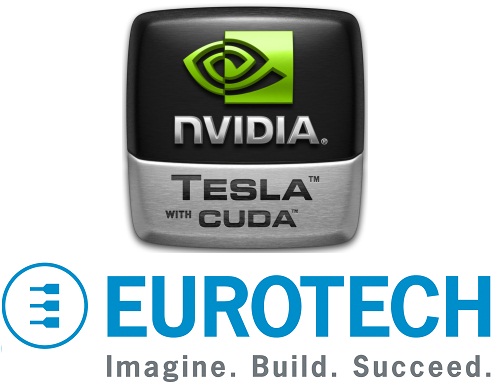The Green 500 results are in and while a good portion of the list wore its Blue Genes proudly, as expected for this sort of event, there were a couple of surprises at the very top.
 European system vendor Eurotech showcased two systems on the Top 500 this year, both of which were bred in Italy–and both of which secured the top two positions. Also of note is that fact that each of these systems had a GPU boost to their bottom performance line.
European system vendor Eurotech showcased two systems on the Top 500 this year, both of which were bred in Italy–and both of which secured the top two positions. Also of note is that fact that each of these systems had a GPU boost to their bottom performance line.
While the real honor on the Green 500 is when companies wrangle high core counts, accelerators and high Top 500 ranking into a tight power envelope, Eurotech succeeded in making its only two systems on either list count, despite their small size and relatively low performance ranking.
The king of the Green machines is the Eurora system at CINECA, Italy’s largest supercomputing system, which is also home to the #12-ranked Fermi Blue Gene/Q which has had a strong showing on previous Green and Top 500 lists, as one might expect from a 163,840-core powerhouse using IBM’s notoriously efficient architecture. The center has a total of 3 Top 500 supers, the other two of which emphasize efficiency via IBM architecture (Blue Gene/Q and iDataPlex)–and then, of course Eurora.

The Eurora system may have been top place for the Green 500, but with 2,688 cores, it just flopped its way onto the Top 500, coming in at #467. Although it was no titan system, there were not any huge surprises about this top efficiency ranking–the news that it hit the 3,150 megaflops per watt high was announced earlier this year, promising to upset the competition barring any surprises.
 The system taps 128 NVIDIA Tesla K20s inside Eurotech’s Tigon box, which uses the company’s native hot water system to cool the main electrical guts (and heat a companion building if desired). As Eurotech describes, their supercomputer makes use of “direct water cooling and electronics design [that] allow for very high densities to be reached with a peak performance of 350 TFlops/per rack.
The system taps 128 NVIDIA Tesla K20s inside Eurotech’s Tigon box, which uses the company’s native hot water system to cool the main electrical guts (and heat a companion building if desired). As Eurotech describes, their supercomputer makes use of “direct water cooling and electronics design [that] allow for very high densities to be reached with a peak performance of 350 TFlops/per rack.
And to hedge its bets against any surprise upsets to their Green victory, close on the efficiency ranking heels was the other Eurotech GPU system at Selex Elsag. This one, like its champion, is based on Eurotech’s Tigon supercomputer. While close in megaflops per watt (3179) it also had higher in performance, coming in at at #395 on the Top 500. Again, it also sports a relatively low core count–under 10,000 but it makes up for that in performance with a boost from the K20 side.
Eurotech said today that when it comes to “green” implications, the “100 TFlop Eurora system, when compared to an equivalent performance air cooled system, brings a reduction of more than 2,3000 tons of CO2 emissions per rack in 5 years.”
From the outside looking in on both the Green and Top 500 lists it might seem that GPUs offer some kind of performance and efficiency gain. While NVIDIA understands that these are small, speciality clusters designed to perform well in just this type of benchmark, they do point to the notion that these results “establish GPU accelerator advantage versus CPUs and other accelerators for energy efficient high performance supercomputing.”
The fact remains that a comprehensive view of the Green 500 reveals a much larger truth–that IBM still takes the efficiency cake.
On a side note, if you’ll recall, last year, NIC’s Beacon system took charge of the Green list with 2,499 MFlops per watt compared to the 3,208 and 3,179 ratings for the top two Italian systems from this year. This a notable improvement, but recall that the Xeon Phi-powered Beacon sported a MFlops per watt ranking of 2499. It remains the third-place titleholder.
It’s hard to argue with this fact, especially if you disregard any specialty purpose nature of these two systems. The GPU top slot holders rather far outrank the efficiency of the next-in-line Xeon Phi-based system in France and knock the Phi-powered Beacon off its perch rather effectively.
“Raw performance is no longer the exclusive measure of the value and impact of supercomputers,” said Sumit Gupta, general manager of the Tesla Accelerated Computing Business Unit at NVIDIA. “All future systems will need to deliver higher performance with reduced power consumption. With GPU accelerators in the top two spots, the latest Green500 list demonstrates accelerators’ ability to deliver unmatched levels of energy-efficient supercomputer performance for next-generation systems.”



























































